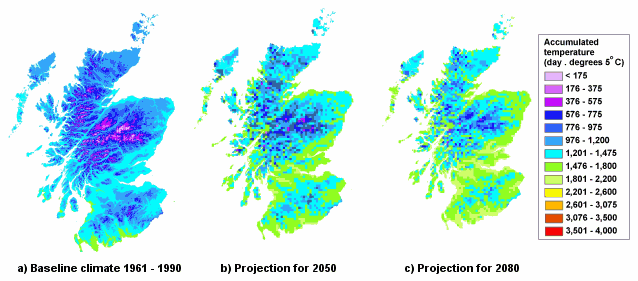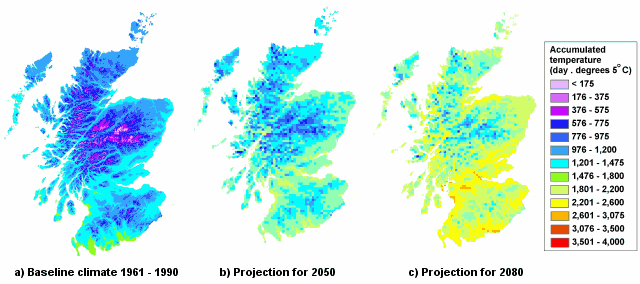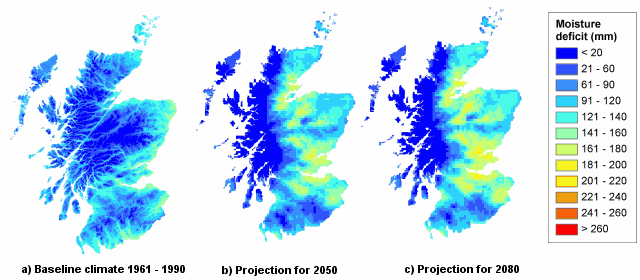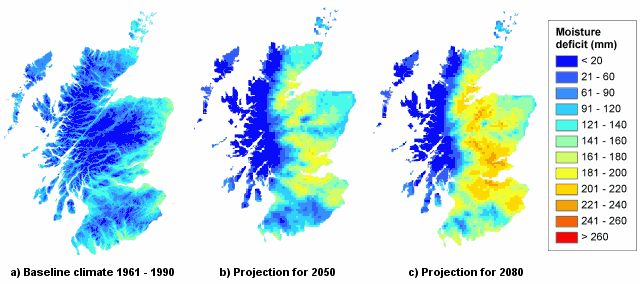Summary
Summary
Climate scenarios published by UKCIP (2002) have been used to calculate climatic indices of climatic warmth and wetness for the future 30-year climatic periods centred on the years 2050 and 2080, for the low and high emissions scenarios.
The maps below show changes for the low and high UKCIP02 emissions scenarios. These maps represent the upper and lower range of UKCIP02 climate projections for Scotland’s climate.
Climatic warmth
A convenient measure of warmth representing the potential for plant growth, is given by an index called accumulated temperature (AT). AT is the number of day-degrees over 5 °C for the growing season (February to October inclusive).
The AT maps below show that by 2080 AT might increase by up to 30% in parts of Scotland in a high emissions’ scenario, and by 15-20% for a low emissions’ scenario. In 2080 if the high emission scenario projections occur, Caithness may have a warmer growing season, perhaps similar to East Lothian in the baseline climate.

Low emissions’ scenario projections
High emissions’ scenario projections
Climatic wetness
This index is a moisture deficit (MD), which compares the accumulated excess of monthly evaporation over monthly rainfall for the summer months. The annual maximum accumulated excess (the annual maximum MD) is averaged over the 30-year climate period, to provide a climatic average of the rainfall excess or droughtiness of the climate during the summer months.
The MD maps below show that changes in the regional and seasonal distribution of rainfall suggest the onset of bigger moisture deficits in eastern Scotland. Mean maximum MDs may increase from about 140 mm in eastern Scotland to over 200 mm in a high emissions’ scenario.

Low emissions’ scenario projections
High emissions’ scenario projections
